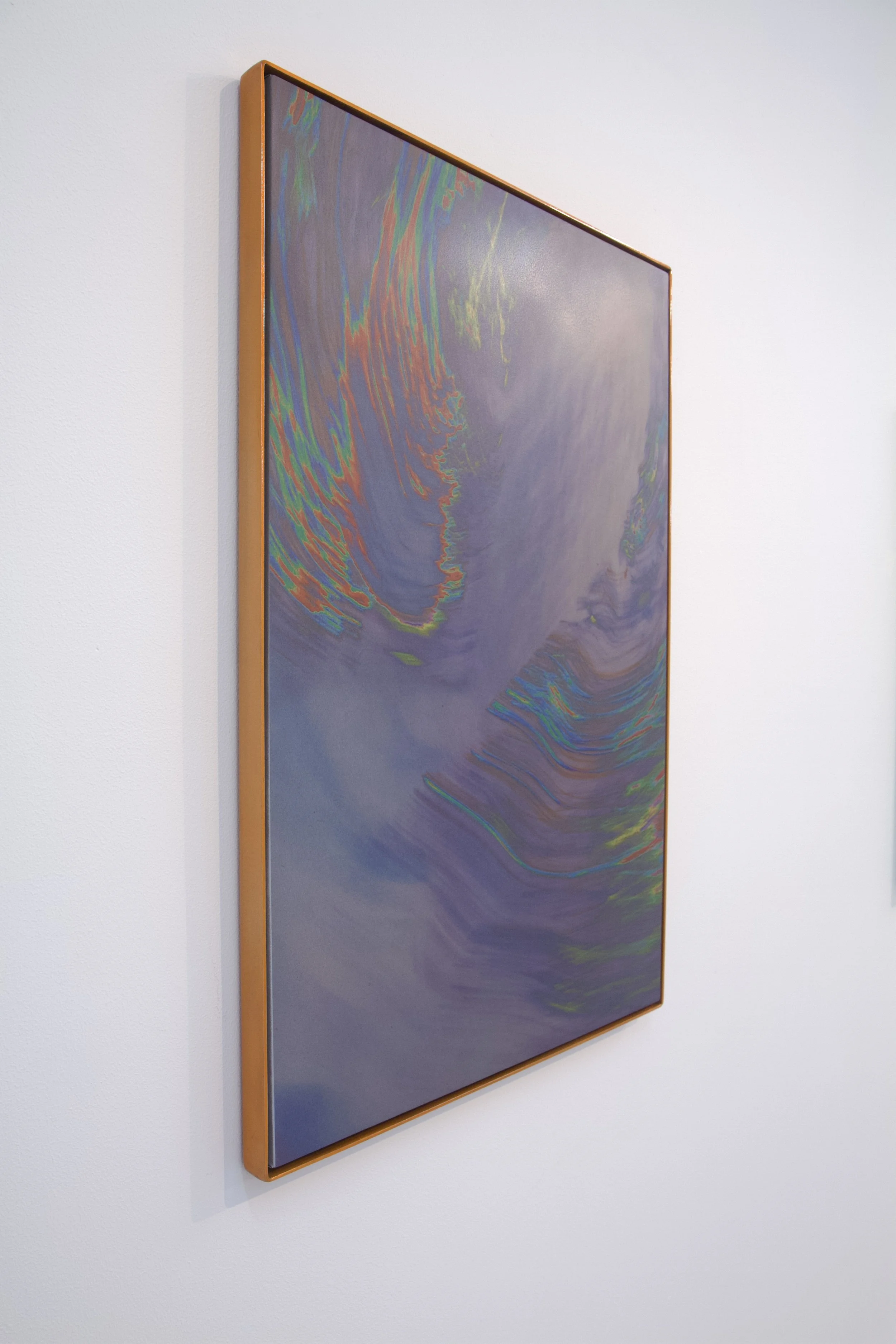By Forces Unseen
Ryan DaWalt, installation view. Image courtesy of the artist.
Artists are constantly pushing the boundaries of the visible. There is a long tradition of micro-art that requires the viewer to view the work through a magnifying glass, such as intricate sculptures carved into pencil leads. As soon as electron microscopes could image the nano-scale world, artist-scientists made artworks atom-by-atom, works that could only be meaningfully seen through the microscope's electro-mechanical eye. Bioartist Eduardo Kac encoded a poem into bacterial DNA, left the organisms to reproduce and evolve, and then decoded a mutated poem that can be "read" on PCR gels – a collaboration between the artist and natural forces beyond anyone's direct control.
Both artists in Sapovnela at 11 Newel Gallery – curated by Tessa Krieg – mobilize the unseen and uncontrollable in creating their work. Leila Spilman uses natural decay and supposedly supernatural electrophotography to make prints of great material and historical complexity. Ryan DaWalt harnesses magnetism and ultraviolet light, resulting in paintings that glow and wire sculptures held in tense equilibrium by unseen forces.
Installation view. Image courtesy of the gallery.
Spilman based her series of screen-prints on Kirlian photography, an electrophotographic technique that captures an object's coronal discharge on electrically charged film. While the process's characteristic glowing tendrils have a scientific explanation, some interpret them as evidence of a supernatural aura, otherwise invisible to the naked eye. Spilman’s prints all depict food: she was inspired by a book that used Kirlian photography to valorize "living" raw and organic food which emitted a stronger aura than "dead" cooked food (differences in moisture and electrolyte content notwithstanding).
Spilman's other works in the exhibition are no less complex. The artist's grandfather, photographer Alden Spilman, allowed his granddaughter to work with an archive of his work moldering away in a cottage in Cape Cod. Leila created Aqueous Surprise 5 from one of Alden's prints that sat untouched in a frame for decades. The image, gradually transformed by moisture, mold, and chemical reactions, marks the relentless passage of time from a snapshot of a garden to something more abstract and surprising.
Leila Spilman, Energy 1127, print on mounted 3M in powder coated yellow steel frame, 20 x 30 in. Image courtesy of the gallery.
Another intergenerational collaboration involved a series of photocopies on heat transfer paper: the elder Spilman used this paper to transfer his photographs, intentionally blurred beyond recognition, to fabric and garments. Spilman the younger found some of this transfer paper that, miraculously, had survived for decades without decaying. These transfers eventually found their way onto fabric: Spilman printed them on reflective 3M material used to make safety vests for construction workers. Light bounces through these prints, illuminating rainbow oil slicks that swirl across the reflective surface.
Ryan DaWalt, Noctiluca, silk, magnets, natural lodestone, UV ferromagnetic pigment, acrylic, wire, and wood on board, 11 x 16 in. Image courtesy of the gallery.
Ryan DaWalt's ultraviolet paintings and magnetic works reveal bits of the world outside the visible electromagnetic spectrum. Rather than simulating this reality within ours by lifting imagery from one part of the spectrum and dropping it in another, like the infra-red vision sequences in the Predator films, his works bring us into this parallel world by flooding the exhibition space with ultra-violet radiation. While these paintings might be interesting to look at in a conventionally-lit environment when drenched with black light, the paintings glow with unnaturally vibrant colors that may not otherwise be visible.
DaWalt's fluorescent paintings also contain magnets, lodestones, and ferromagnetic pigments. While the paintings' retina-scorching colors prevent prolonged scrutiny of their magnetic elements, DaWalt's wire sculptures provide a clearer vision of the electromagnetic forces that affect and shape the world around us. In Endoplasm, clusters of charged shavings cover magnetic discs like a crystalline mold, glowing in the blacklight, its form dictated by the fundamental laws of electromagnetism. Another magnetic piece, Ma, presents two magnets attracting each other but held back from making contact by the wire armature. Magnetic particles accumulate on the discs, showing the effect this otherwise invisible force has on the structure of the entire piece.
Ryan DaWalt, Ma, magnets, ferromagnetic pigment, copper wire, solder, marble, 7 x 8 x 7 in. Image courtesy of the gallery.
The sheer material complexity of the work on view in Sapovnela is a spectacle in itself. Spilman's prints draw from a complex history going back decades and the transformation of artworks that would otherwise rot away into vibrant expressions of their fragility and materiality. The Kirlian screen-prints mobilize an arcane technique that potentially captures evidence of the supernatural – condensed into four-channel silk screens, noisy with the medium's characteristic grain. DaWalt's magnetic pieces have their own grain, their patterns determined by the state of Earth's magnetic field when the pigments were fixed onto each work's surface. His fluorescent pieces' unnatural glow reminds the viewer of how much exists outside of the visible world. The visible spectrum is an infinity of possible wavelengths contained within a much larger infinity, the vast, terrifying range of everything possible in the universe.

















